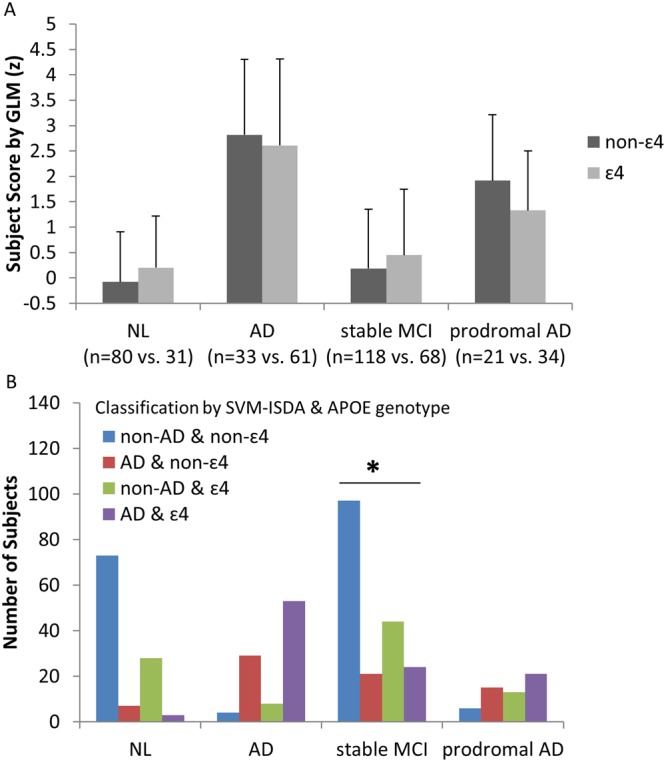Figure 4.

Effects of APOE mutation. (A) When GLM was used, no significant effects of APOE genotype in subject scores were observed in any groups (p > 0.08, student t-test), which was replicated when SSM/PCA was used (p > 0.06). (B) The proportion of subjects classified as “AD” vs. “non-AD” by SVM-ISDA was significantly different between APOE ɛ4 carriers vs. non-carriers only in stable MCI patients (χ2 = 7.202, p = 0.007, Pearson Chi-Square). In other words, if a patient with stable MCI has ɛ4, it is more likely that the patient will be classified as “AD”. From the 118 stable MCI non-ɛ4 carriers, 21 patients (17.8%) were classified as AD, in contrast to 24 of 68 stable MCI ɛ4 carriers (35.3%) were classified as AD. Similar results were produced when SVM-SMO was used in stable MCI patients (χ2 = 10.690, p = 0.001). In contrast, 8–10% normal control subjects received AD-designation regardless of APOE status. In AD, 86–88% individuals received AD-designation regardless of APOE status. In prodromal AD, 61–72% individuals received AD-designation regardless of APOE status.
